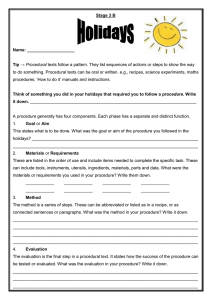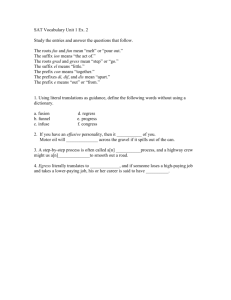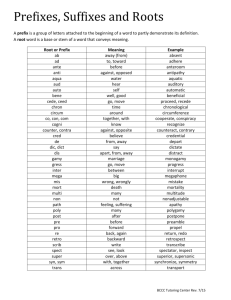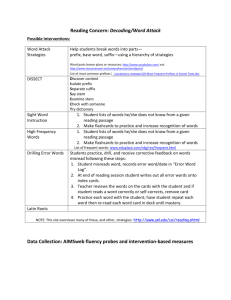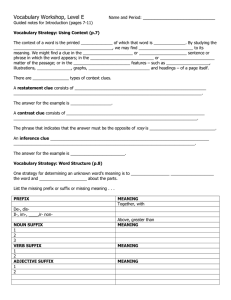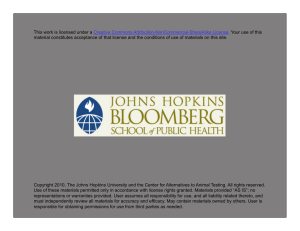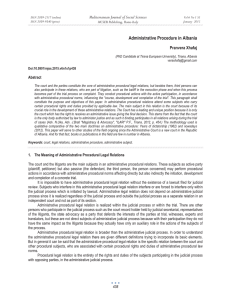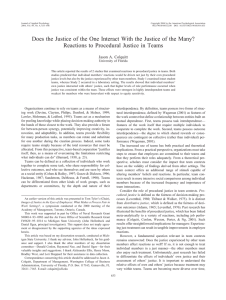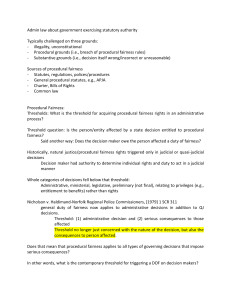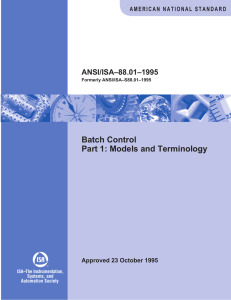Academic Vocabulary
advertisement
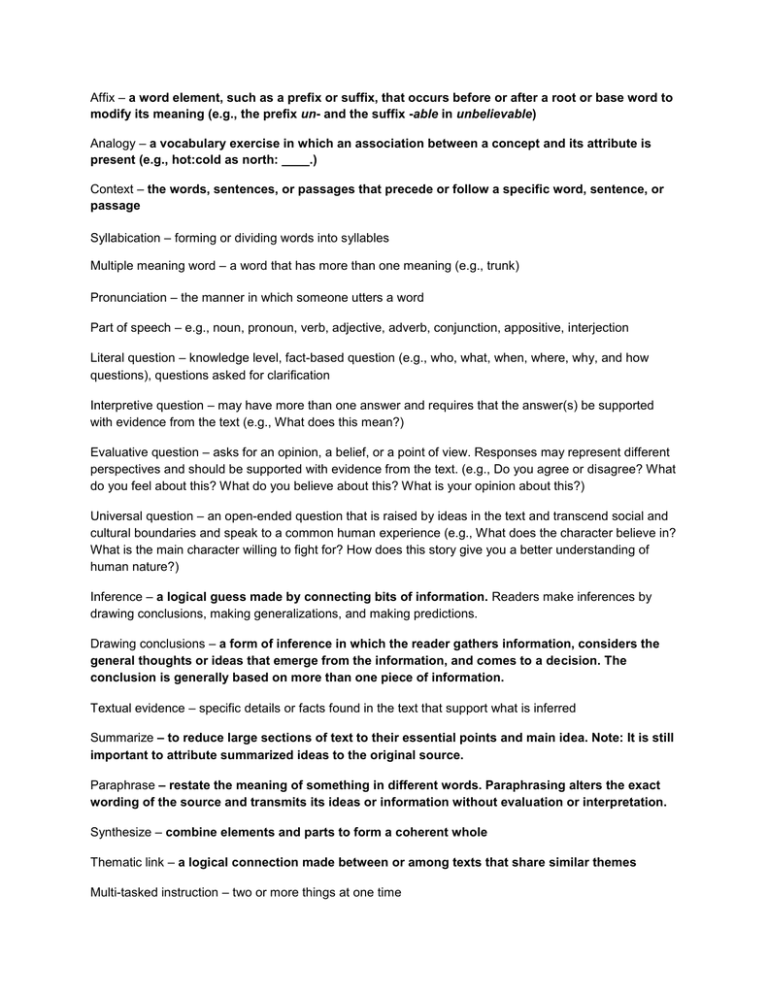
Affix – a word element, such as a prefix or suffix, that occurs before or after a root or base word to modify its meaning (e.g., the prefix un- and the suffix -able in unbelievable) Analogy – a vocabulary exercise in which an association between a concept and its attribute is present (e.g., hot:cold as north: ____.) Context – the words, sentences, or passages that precede or follow a specific word, sentence, or passage Syllabication – forming or dividing words into syllables Multiple meaning word – a word that has more than one meaning (e.g., trunk) Pronunciation – the manner in which someone utters a word Part of speech – e.g., noun, pronoun, verb, adjective, adverb, conjunction, appositive, interjection Literal question – knowledge level, fact-based question (e.g., who, what, when, where, why, and how questions), questions asked for clarification Interpretive question – may have more than one answer and requires that the answer(s) be supported with evidence from the text (e.g., What does this mean?) Evaluative question – asks for an opinion, a belief, or a point of view. Responses may represent different perspectives and should be supported with evidence from the text. (e.g., Do you agree or disagree? What do you feel about this? What do you believe about this? What is your opinion about this?) Universal question – an open-ended question that is raised by ideas in the text and transcend social and cultural boundaries and speak to a common human experience (e.g., What does the character believe in? What is the main character willing to fight for? How does this story give you a better understanding of human nature?) Inference – a logical guess made by connecting bits of information. Readers make inferences by drawing conclusions, making generalizations, and making predictions. Drawing conclusions – a form of inference in which the reader gathers information, considers the general thoughts or ideas that emerge from the information, and comes to a decision. The conclusion is generally based on more than one piece of information. Textual evidence – specific details or facts found in the text that support what is inferred Summarize – to reduce large sections of text to their essential points and main idea. Note: It is still important to attribute summarized ideas to the original source. Paraphrase – restate the meaning of something in different words. Paraphrasing alters the exact wording of the source and transmits its ideas or information without evaluation or interpretation. Synthesize – combine elements and parts to form a coherent whole Thematic link – a logical connection made between or among texts that share similar themes Multi-tasked instruction – two or more things at one time PURPOSE Purpose – the intended goal of a piece of writing; the reason a person writes Stated purpose – declared, explicit purpose Implied purpose – an indirect, implicit purpose Possible verbs to describe purpose: To inform, explain, tell, demonstrate, share, reveal, teach, communicate To illustrate, show, describe To compare, contrast To provide, give information/examples To persuade, express an opinion, prove, encourage, argue To reinforce (an idea), emphasize To suggest, imply To celebrate To question SUMMARY Summarize – to reduce large sections of text to their essential points and main ideas. Main idea – the overall message of an entire text or section of a text Facts/Details – support the main idea by telling how, when, what, where, why, how much, and how many Fact – a truth that is verifiable Opinion – a personal view or belief based on emotions or interpretation of facts ORGANIZATIONAL PATTERNS Organizational pattern – the pattern an author constructs as he organizes his or her ideas and provides supporting details Problem-and-solution – an organizational structure in which the author introduces the situation or conflict and then proceeds to explain how to correct the situation or resolve the conflict Proposition-and-support – an organizational structure in which the writer first asserts an idea or opinion and then provides information to support the idea or opinion Other possible examples of organizational patterns: Cause-and-effect Sequential order Description Order of importance Compare-and-contrast Logical order Classification scheme EXAMPLES OF PROCEDURAL TEXT: Instructions/Directions Procedures Manual Recipe Procedural text – a type of informational text that is written with the intent to explain the steps in the procedure, as in a recipe. Procedural text could house data that requires reader interpretation. POSSIBLE FORMS OF MEDIA: Advertisement – print and electronic (e.g., flyers, brochures, posters, signs) Newspaper Magazine Radio program (songs, lyrical music) Web page – online information Televised news Documentary Commercial Product label Photograph (with and without caption) HOW VARIOUS TECHNIQUES INFLUENCE VIEWERS’ EMOTIONS Possible techniques: Testimonial – a statement in support of a particular truth, fact, or claim; recommendation Bandwagon appeal – a persuasive technique used in media messages that appeals to the “everyone is doing it” mentality Exaggeration Contradiction Misleading statement Sentimental appeal Scare tactic False authority – use of authority instead of evidence Appeal – in rhetoric, the means of persuasion in an argument. According to Aristotle, there are three fundamental appeals to convince a person: reason (logos), ethics (ethos), and emotion (pathos).

